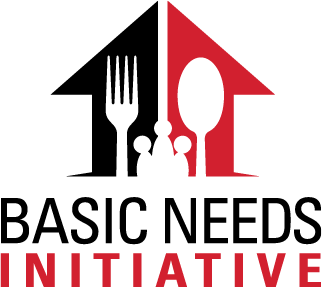Background
CSU Basic Needs Initiative
We live in an exciting era when more students than ever are attending college. According to The National Center for Education Statistics, in the Fall of 2016, an unprecedented 20.5 million students attended American Colleges and Universities. Within the 23 campus California State University (CSU) system alone, we enroll 484,000 students. While these numbers reflect tremendous progress for student access to education there is an underlying set of concerns. Education budgets have been reduced while the cost of attendance has increased, leaving many college students under enormous pressure to make ends meet.

In California, a state that consistently has one of the highest costs of living, students are seeking resources just to maintain their basic needs so they can remain in school. The CSU has recognized these concerns and demonstrated leadership in addressing them. The Chancellor's Office has directed resources towards the Basic Needs Initiative. This innovative set of programs exists to support and involve all of the 23 campuses in research, resource cultivation, capacity building, education and outreach, networking, and ultimately student success.
Here at CSUMB, we are working on the issue in a multitude of ways, including an on-campus Food Pantry, CalFresh Outreach, and an interdisciplinary Basic Needs Committee. Associated Students created the position of Basic Needs Senator, devoted entirely to the coordination of the Food Pantry and cultivation of other resources to support students. Additionally, CSUMB was awarded SB 85 “Hunger-Free” Campus Designation funds to both bolster our existing efforts and find more innovative and cost-effective ways to help students.
Understanding food security
There are four different rankings of Food security. It is important to understand these rankings in order to know if you or another student is struggling with food insecurity.
| Food Security Ranking | What it means |
|---|---|
| High Food Security | No reported indications of food access problems or limitations |
| Marginal Food Security | One or two reported indications-typically of anxiety over food sufficiency or shortage of food in the house. Little or no indication of changes in diet or food intake. |
| Low Food Security | Reports of reduced quality, variety or desirability of diet. Little or no indication of reduced food intake. |
| Very Low Food Security | Reports of multiple indications or disrupted eating patterns and reduced food intake |
Understanding homelessness and housing security
Due to the rising costs of education many college students have found it challenging to secure housing that they can afford. Though most universities offer on-campus housing options, there are still some students who cannot access them, for a variety of reasons. This leaves many in the predicament of choosing tuition over a place to live. Some students rely on "couch surfing", sleeping in their cars (if they have one) or staying in an abusive relationship/environment just to keep a roof over their heads.
A lack of a fixed, regular and adequate nighttime residence; and unaccompanied, which includes youth not in the physical custody of a parent or guardian. (The McKinney-Vento Homeless Assistance Act, Subtitle B of Title VII)
Connecting data to our students
Released in February 2018, the CSU Study of Student Basic Needs (Phase 2), a comprehensive research study reinforced the findings from the 2016 Phase 1 snapshot study on the prevalence of food and housing insecurity amongst CSU students. Phase 1 findings underscored the need for policies and systems to address food and housing insecurities impacting students, throughout the CSU. In phase 2, students at all 23 campuses were polled in the Fall of 2016 about their food and housing security as it relates to GPA, well-being and overall success as students. The response rate to the survey was:
- Total CSU system: 5.8% or 24,324 student respondents
- CSUMB specific: 9.16% or 699 student respondents
Below are some of the key results, benchmarking the overall CSU system with CSUMB specific data.
| Experience | CSU Survey Respondents | CSUMB Survey Respondents |
|---|---|---|
| Food Insecurity | 41.6% | 50.1% |
| Housing Insecurity and Homelessness* | 10.9% | 15.9% |
(*note: students were asked if they had experienced homelessness one or more times in the previous 12 months, based on the Dept. of Ed definition which is from The McKinney-Vento Homeless Assistance Act)
The findings of the survey reveal that CSUMB students are dealing issues of food and housing insecurity at higher rates than their counterparts reported at other CSU's. The data provides us with a snapshot of what barriers our students may be facing, thereby informing our direction for building resources to support them.